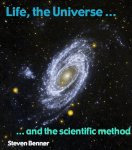The recent pandemic of the disease COVID-19 is surrounded by numerous perplexities. These are apparent because, for the first time in history, technology is available to study, in “real time”, the molecular biology of both the virus and human patients responding to it. Further, technology to enable both classes of study is sufficiently democratized that individual researchers can locally mitigate the disappointing response of the CDC molecular tests and the regulatory filter of the FDA.
One perplexity arises from the surprisingly large number of people that serology tests suggest have already been infected by the SARS-CoV-2 virus (also called 2019-nCoV), but who have not presented with COVID-19 symptoms. That number is 50-85 times “too large” in Santa Clara County [1]. This is too large to be attributed to background “noise”.
Another perplexity is evident in interviews with COVID-19 patients in Alachua County, Florida. At least one patient appears to have been infected with a virus that originated in Georgia, was carried to Florida by a first individual who later displayed COVID-19 symptoms (and tested positive for SARS-CoV-2 RNA), was transmitted via a second individual who never displayed COVID-19 symptoms (but tested positive for viral RNA), and was received by a third individual who later displayed COVID-19 symptoms and also tested positive for the viral RNA [2]. This transmission history perhaps exemplifies a widely discussed potential for “asymptomatic carriers”.
Serological tests do not normally use whole virus as “bait” for human antibodies that emerge in SARS-CoV-19 infected individuals, which are different in their molecular details from individual to individual. Rather, they generally use parts of the viral proteome expressed recombinantly to represent the entire virus [3]. This is the case for the kit marketed by Cellex, the first to be approved by the FDA [4], and is likely for the Premier Biotech kit used in Santa Clara and the BioMedomics kit used in last week’s study in Chelsea. A representative example of such portions can be found in literature now emerging [3][5]. For example, they include the S ectodomain of SARS-CoV-2, but also fragments of these and other proteins.
This prompts the hypothesis that at least one other, currently unidentified, coronavirus (SARS-CoV-X) has been (and is still) circulating in the population, independent of SARS-CoV-19, at least in Santa Clara [10]. In this hypothesis, SARS-CoV-X causes minimal symptoms, and the symptoms that it causes have passed for a cold, mild influenza, allergies, or other non-descript respiratory infection. However, as an evolutionarily related coronavirus, SARS-CoV-X generates immunoglobulins that cross react with the peptides that have been chosen as “baits” in various serological tests.
According to this hypothesis, most of the asymptomatic “serology positive” individuals in Santa Clara County have actually never been infected by SARS-CoV-2. Instead, they have been infected by SARS-CoV-X. This may, according to the hypothesis, provides them partial immunity, allowing them to be (largely) asymptomatic carriers of SARS-CoV-2. According to this hypothesis, the partial immunity is sufficient to restrain their symptoms should those individuals encounter 2019-nCoV, but not enough to entirely prevent cycles of replication to allow them to be forward transmitters.
Some of the molecular tests for viral RNA would not detect SARS-CoV-X. Some, such as those that target the E gene, might. Thus, this hypothesis has direct impact on how we, today, interpret the results of RT-PCR tests, including those tests developed here at the Foundation for Applied Molecular Evolution and Firebird Biomolecular Sciences LLC.
Further, if different serological tests use different baits, as different baits almost certainly have different levels of amino acid identity between SARS-CoV-2 and SARS-CoV-X, and as different levels of amino acid identity almost certainly mean different levels of cross-reactivity in these tests, X we expect that different serological tests will return different estimates of the number of individuals in the general population who “have already had” a SARS-CoV-2 infection. Thus, the BioMedomics test used in the Chelsea experiment, the Premier Biotech kit used in Santa Clara, and the Cellex kit with FDA approval, might vary in this way, making this hypothesis also meaningful for how we, today, interpret the results of serology tests.
What is the origin of SARS-CoV-X? Again, we do not know. Virgin human contact with bats and other exotic species continues as human population expands. SARS-CoV-2 may have emerged as a result of these, possibly in “bush meat” markets in China. Alternative, SARS-CoV-2 may have emerged accidentally from a laboratory in Wuhan that was studying a range of coronaviruses [6][7]. Presumably, other laboratories worldwide were (are) also studying coronaviruses in the SARS family, where a breach of biosafety protocols may have released SARS-CoV-2.
Whatever the reader’s preferred mechanism for the origin of SARS-CoV-2, a similar mechanism could have released SARS-CoV-X, either from the same laboratory, cave, or market or from another locale.
Of course, there is no reason for SARS-CoV-X to have the same transmissibility as 2019-nCoV, or to have spread equally to different geographical jurisdictions. Santa Clara County has had a different pattern of human movement to and from the rest of the world than, for example, Lombardy, Seattle, Georgia, or Alachua County. Indeed, it is quite possible that coronaviruses closely related to SARS enter the human population continuously. Only a few of these are capable of forward transmission in human hosts, and perhaps only a few of these cause symptoms. Thus, it is conceivable that SARS-CoV-X entered the human population, for example, in 2018, achieved limited distribution, and only now is being recognized by the antibody test.
Our SAMRS technology (SAMRS is an acronym for “self avoiding molecular recognition systems [8]) will allow the easy development of a multiplexed coronavirus test that can identify the RNA from any/all of the manifold of coronaviruses that might include SARS-CoV-X, and there might be several of these. Evolutionary analysis tools may be used to fill in the gaps in the tree [9]. This development should begin immediately.
[1] Bendavid, E. (2020) COVID-19 Antibody Seroprevalence in Santa Clara County, California. medRxiv preprint doi: https://doi.org/10.1101/2020.04.14.20062463.
[2] Steven Benner, unpublished. Patient “CJ”.
[3] Lassauniere, R. et al. (2020) Evaluation of nine commercial SARS-CoV-2 immunoassays. medRxiv preprint, https://doi.org/10.1101/2020.04.09.20056325.
[4] Hahn, S. M. (7 April 2020) Coronavirus (COVID-19) Update: Serological Tests. https://www.fda.gov/news-events/press-announcements/coronavirus-covid-19-update-serological-tests.
[5] Okba, N. M. A. (2020) Severe Acute Respiratory Syndrome Coronavirus 2−Specific antibody responses in coronavirus disease 2019 patients. Emerging Infect. Diseases https://doi.org/10.3201/eid2607.200841.
[6] Cyranoski, D. (2017) Inside the Chinese lab poised to study world’s most dangerous pathogens. Nature 542, 399–400 (23 February 2017) doi:10.1038/nature.2017.21487
[7] On January 2020, the Editors of Nature added a note to reference [6]. “Many stories have promoted an unverified theory that the Wuhan lab discussed in this article played a role in the coronavirus outbreak that began in December 2019. Nature knows of no evidence that this is true; scientists believe the most likely source of the coronavirus to be an animal market.”
[8] Hoshika, S., Leal, N., Chen, F., Benner, S.A. (2010) Artificial genetic systems. Self-avoiding DNA in PCR and multiplexed PCR. Angew. Chem. Int. Edit. 49, 5554-5557. PMID 20586087
[9] Benner, S. A., Chamberlin, S. G., Liberles, D. A., Govindarajan, S., Knecht, L. (2000) Functional inferences from reconstructed evolutionary biology involving rectified databases. An evolutionarily-grounded approach to functional genomics. Research Microbiol. 151, 97-106.
[10] The Chelsea study results are perhaps more likely explained by a large number of true SARS-CoV-2 cases having symptoms not demanding hospitalization.

